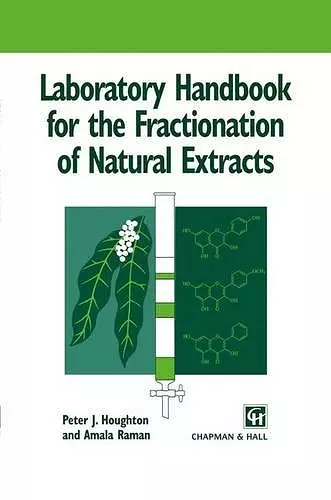Laboratory Handbook for the Fractionation of Natural Extracts
Peter Houghton author Amala Raman author
Format:Hardback
Publisher:Chapman and Hall
Published:31st Mar '98
Currently unavailable, and unfortunately no date known when it will be back
This hardback is available in another edition too:
- Paperback£131.50(9781461376620)

Springer Book Archives
A reference for research scientists involved in the extraction, fractionation and isolation of compounds from natural materials, especially those working with plants. This book features practical exercises to illustrate the techniques described in every chapter.1. 1 THE NEEDFOR THIS BOOK- ANACTIVE EXTRACT, WHAT HAPPENS NEXT? All over the world at present there is greatactivity as scientists investi- gate plants, micro-organisms, marine creatures and many other forms of life for biological activity. There is a desire to find out more about the interactionsbetweenone organismand another which can be attributed to the chemical substances present in at least one of the species con- cerned. The area where activity has been greatest is the effect ofextracts from the flowering plantsonhuman physiology and human pathogens, since this is very relevant to the discovery ofnew drugs for treating dis- eases ofhumanbeings and other mammals. However, it should be noted thatother groups ofliving organisms are now being investigated for the same purposes and regular reports appear in the scientific literature which describe the activity of extracts and compounds isolated from marine organisms, amphibians, fungi and insects. Other types ofchemicallybased biological interactions are being stud- ied which have implications for otherways in which conditions canbe manipulated to serve thehuman race. Thus, interactionsbetweenplants and insects may produce new pesticides or repellents, interactions between two species offlowering plantresultin herbicidalcompounds and the chemical interactionsbetween species have environmental impli- cations. This interdisciplinary science is sometimes called ecological chemistry and offers many fascinating insights into the complexity oflife onour planet. Many methods have beendevised whereby the activity ofa compound or extract can be tested scientifically.
ISBN: 9780412749100
Dimensions: unknown
Weight: unknown
199 pages
1998 ed.